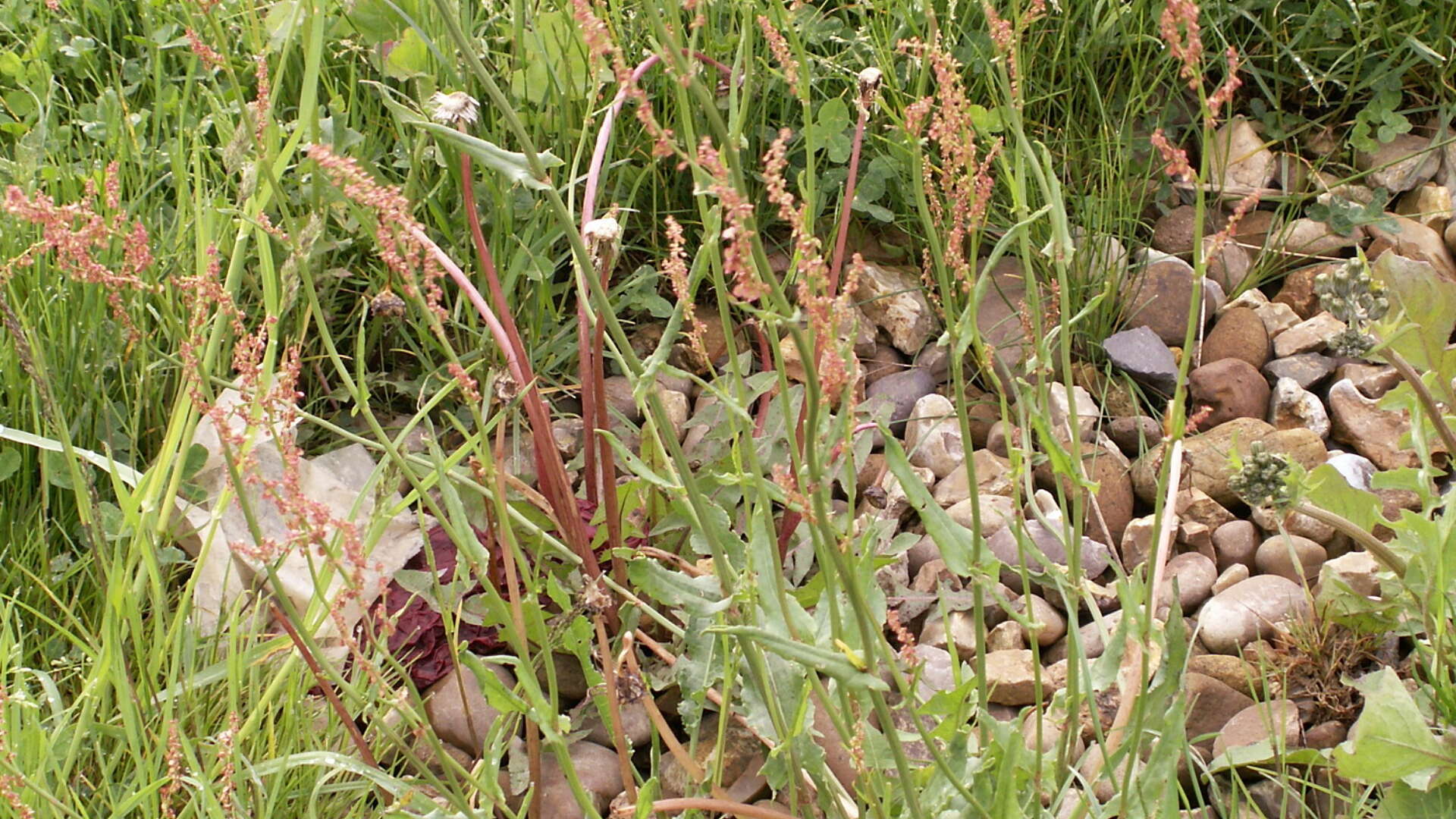Common sorrel

Other names
Sour dock
Latin names
Rumex acetosa L.
Weed Type
Perennial Broad-leaved Weeds
Where would I find Common sorrel?
Common sorrel is an erect perennial, native in a wide range of grassy places including grass leys. It is found in open woodland, woodland rides and edges, in maritime and river shingle, and on mountain ledges. Common sorrel is tolerant of shade and can survive under bracken. It is most frequent on mildly acidic soils of pH 5.0 to 7.0. It is generally found on grass leys but is only a casual on arable land. It is recorded up to 4,050 ft in Britain.
Common sorrel has a fibrous root system and in a well-drained soil the rooting pattern is relatively superficial. It occurs on damp soils but unlike some other Rumex spp., common sorrel does not develop flood-resistant roots in response to waterlogging. The primary lateral roots will die within 1-2 weeks if flooding persists. Common sorrel exhibits much morphological variation but does not hybridise with related species.
Common sorrel has been used as a salad plant and in sauce making. However, the high level of oxalates in combination with anthracene derivatives can make the leaves potentially toxic to man and animals if eaten in excess. If consumed in large quantities by cattle and sheep, the oxalate content of common sorrel can cause calcium deficiency which gives symptoms similar to milk fever.
Biology
Common sorrel flowers from May to August. Male and female flowers occur on separate plants. Established populations often contain twice as many female plants. The flowers are wind pollinated. Seed is set from June to September. There are around 2,000 seeds per plant.
In the laboratory, seed germinated virtually completely in the light and in the dark. Seed sown in the field emerged mainly from March to April with a small flush of seedlings in September. However, odd seedlings emerge throughout the year and other studies have found it germinated mainly in the autumn. Seedling emergence and survival is influenced by climate, particularly rainfall. There appears to be no dormancy and seeds may begin to emerge soon after sowing or shedding.
Does Common sorrel spread easily?
Common sorrel is not thought to form a persistent seedbank. However, seeds have been recorded in large numbers in the soil beneath pasture even though the plant was poorly represented in the vegetation. It regenerates readily from fragments of rootstock. In grazed and trampled habitats splitting of the crown may result in the formation of a limited number of daughter plants.
Common sorrel seed has occurred as a contaminant of grass seed mixtures, crop seeds and in hay. Seeds can survive ingestion by cattle and are found in the droppings.
How to manage Common sorrel organically
Control on arable land is through removal of the roots during cultivation combined with hoeing and hand-pulling to prevent seeding. A dressing of lime has a good effect. The use of pure crop seed is most important.
In grassland, seedlings become established where there is sward damage from vehicular traffic, animal hooves or mole activity. Common sorrel exploits hay meadows because of its tall flower heads that set seed before the hay is cut. When grazed, common sorrel forms a low rosette of leaves and sets few seeds.